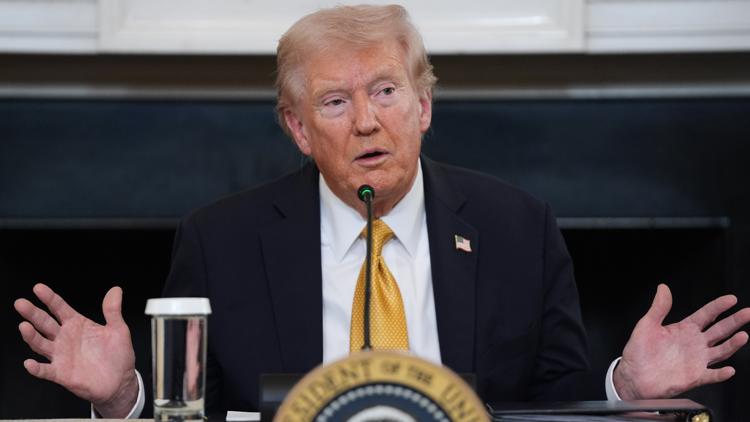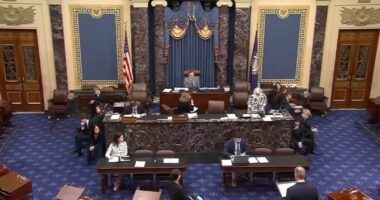Share this @internewscast.com

In a recent Truth Social post, former President Donald Trump proposed an ambitious plan that he claims would generate enough revenue to send $2,000 to most Americans, while also reducing the national debt. This announcement adds to previous mentions of similar ideas by Trump.
Trump’s proposal centers around implementing tariffs, which he believes would create a substantial financial windfall. He stated, “A dividend of at least $2,000 per person (excluding high-income individuals) will be paid to everyone,” suggesting these tariffs would funnel “Trillions of Dollars” into the country’s coffers to address the national debt.
However, for any such stimulus payments to reach Americans, the plan would require congressional approval, and as of now, no such legislation has been introduced or passed.
This isn’t the first time Trump has floated the idea of distributing checks funded by tariffs. Just last month, during an interview with One America News, he hinted at the possibility of using tariff revenues for this purpose. His recent statement rekindles the conversation around potential economic relief, although it remains speculative without concrete legislative action.
Will there be a 2025 stimulus check?
In order for a stimulus check to be sent to Americans, legislation would need to be passed by Congress, which has not happened.
This was not the first time Trump has teased sending checks.
Last month, in an interview with One America News, Trump mentioned the possibility of sending out stimulus checks with tariff revenues.
When asked what he would do with the revenues from higher tariffs on imported goods, he first said the administration is looking at “paying down debt.” He then added they also may issue a stimulus as a result.
“We’ll pay back debt, but we also might make a distribution to the people, almost like a dividend to the people of America,” he said.
In February, Trump said that he liked the idea of giving some of the savings from Elon Musk’s Department of Government Efficiency back to U.S. citizens as a kind of dividend.
He said at an investment conference in Miami that the administration was considering a concept in which 20% of the savings produced by DOGE’s cost-cutting efforts goes to American citizens and another 20% goes to paying down the national debt.
But that plan never went anywhere and Musk left the DOGE office in May.
In July, he mentioned the idea again, stating that his administration was considering sending money to some Americans.
“We’re thinking about that actually. We have so much money coming in, we’re thinking about a little rebate,” Trump said. “But the big thing we want to do is pay down debt, but we’re thinking about a rebate.”
At the time, Trump hinted that they would go to “people of a certain income.”
“We’re thinking about a rebate because we have so much money coming in from tariffs that a little rebate for people of a certain income level might be very nice,” he told reporters outside the White House.
Rebates are defined by the Cambridge Dictionary as “an amount of money that is returned to you, especially by the government, for example when you have paid too much tax.” They define stimulus as “something that causes growth or activity.”
Shortly after, Republican Sen. Josh Hawley introduced the American Worker Rebate Act for a stimulus check, but the idea has fallen flat among his colleagues.
Several Republican senators shot down the tariff rebate check plan publicly, calling the proposal everything from “a bad idea” to “insane.” Most conservatives instead want to use any tariff revenue to pay down the national debt.
Financial experts tend to agree that while tariffs are formally imposed on foreign exporters, the actual cost is shouldered by U.S. companies importing goods. These additional costs are then usually passed on to American consumers as higher prices.














